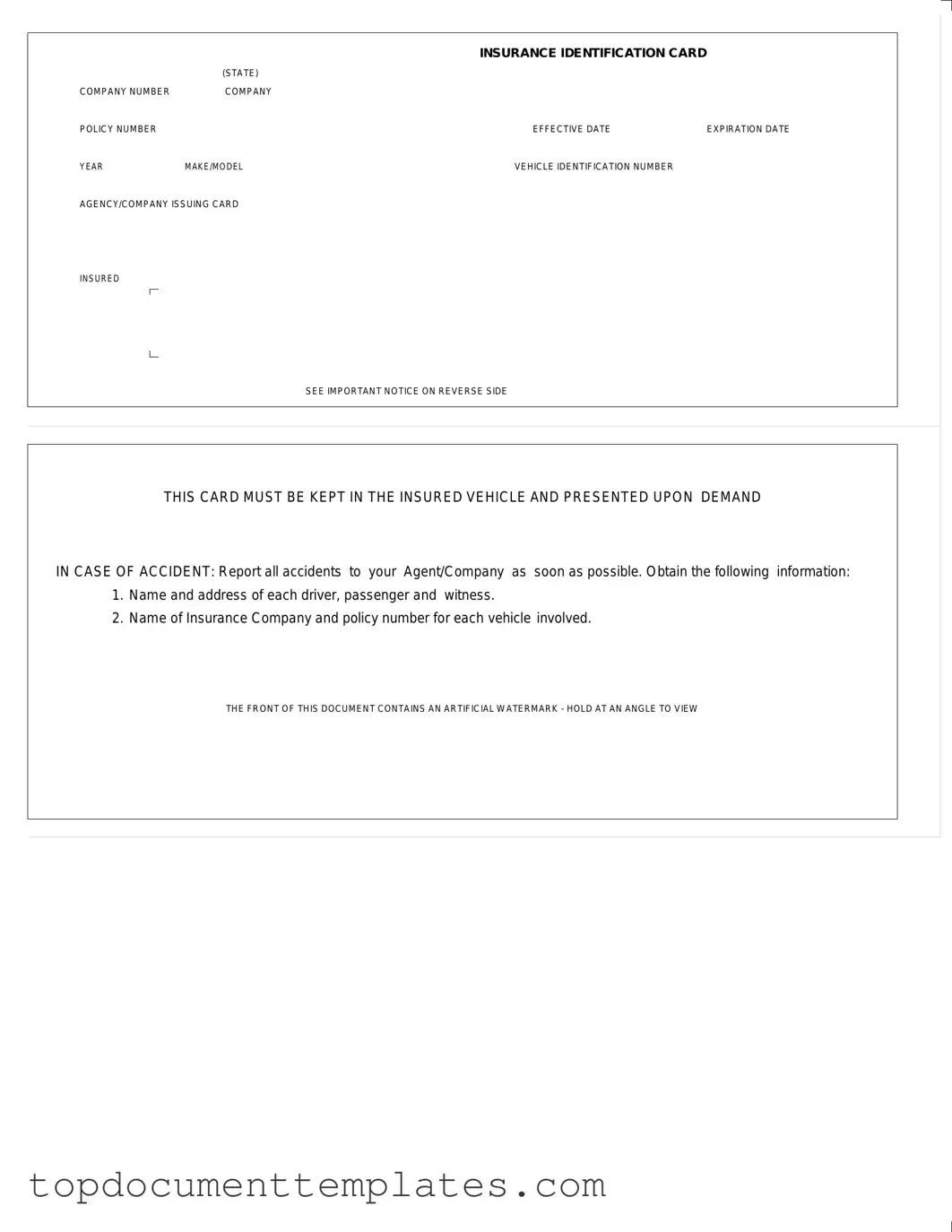The Auto Insurance Card is a crucial document for any vehicle owner, serving as proof of insurance coverage while on the road. This card contains essential information that not only identifies the insurance provider but also outlines the specifics of the policy. Key details include the insurance company’s name, the policy number, and the effective and expiration dates of the coverage. Additionally, the card features the vehicle’s year, make, model, and the Vehicle Identification Number (VIN), which uniquely identifies the vehicle. It is important to note that the card must be kept in the insured vehicle at all times and should be presented upon request in the event of an accident. In such situations, it is vital to report the incident to the insurance agent or company as soon as possible. The card also emphasizes the importance of gathering relevant information from all parties involved, including names and addresses of drivers, passengers, and witnesses, as well as the insurance details of other vehicles. Furthermore, the card includes an artificial watermark for security purposes, which can be viewed by holding the card at an angle. The reverse side of the card often contains important notices that should not be overlooked, making it imperative for vehicle owners to familiarize themselves with all aspects of this document.
